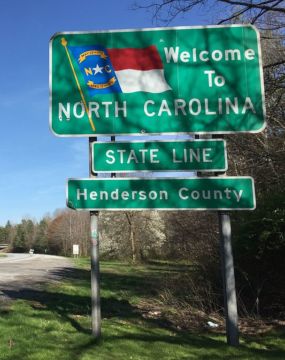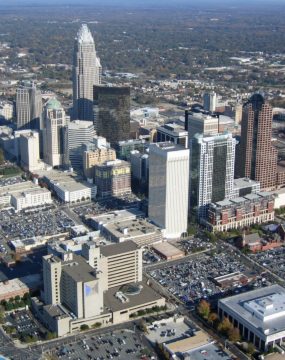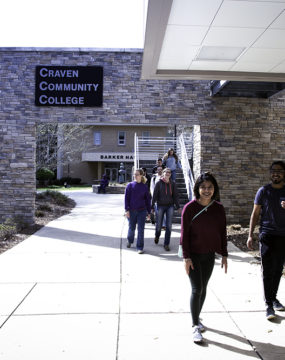Posts written by Rebecca Tippett
Keep up with our latest demographic insights

Just over 666,000 veterans lived in North Carolina in 2016 according to the most recent American Community Survey estimates. This is a decrease of roughly 15,000 veterans or -2.2% from 2013, the year we last profiled North Carolina’s veterans. Nationally, the veteran population decreased at an even faster rate over this time (-5.6%). The U.S. veteran population declined from 19.6 million in 2013 to 18.5 million in 2016, a loss of 1.1 million veterans. While…

Demographic changes in the composition of North Carolina’s child population will likely introduce new challenges to reaching any goal of increasing statewide educational attainment. In Fall 2017, 44 percent or 674,000 North Carolina public school enrollments were black, Hispanic, or American Indian students. Over the past 5 years, this group of students has grown twice as fast as the overall student population and is projected to continue to grow steadily for the next 5-10 years. Compared to the state average, North Carolina’s American Indian, black, and Hispanic students are: Less likely to report plans to continue their education after high school.Eighty-four percent of North Carolina public high school graduates reported plans to continue their education at either a four-year, two-year, or trade school in 2015. While most Hispanic (77%), American Indian (80%), and black (81%) students also report postsecondary plans, they are more likely than their white and Asian peers to report plans to enlist in the military or start employment instead.

Once every 10 years, we count all individuals living in the United States in the census. In 2010, respondents were asked ten questions about basic characteristics, such as age, sex, race, and homeownership status. Last week, Secretary of Commerce Wilbur Ross announced that census respondents will answer one additional question in 2020: citizenship status. Introducing an additional, untested question so late in the census life cycle is concerning to demographers and social scientists, like me, who rely on the census as a key source of information about how and why our population is changing.

North Carolina’s population grew by 1.1% between July 1, 2016 and July 1, 2017, gaining nearly 117,000 new residents over the year. New estimates from the U.S. Census Bureau provide detail on how this growth and change occurred across the state. In North Carolina, these estimates indicate emerging trends that we will continue to examine in the coming months. For now, here’s what you need to know about the data. 1. New estimates suggest shift…

Migration is the main driver of North Carolina’s population growth. Three of every four new residents added to the state between July 1, 2016, and July 1, 2017, were from net migration, primarily from other states. (Note: individuals are classified as domestic or international migrants based on their country of prior residence, not on individual characteristics such as place of birth or citizenship status.) Between 2016 and 2017, the Census Bureau estimates that North Carolina…

Every decade, following the decennial Census, the 435 seats in the U.S. House of Representatives are allocated to the 50 states based on their population. After the 2000 Census, 12 House seats shifted between the states; another 12 seats shifted after the 2010 Census. Two years ago, we explored how ongoing population shifts might impact the reapportionment process following the 2020 Census. At that time, the most recent population estimates were for 2014. Today we…

North Carolina’s population grew to an estimated 10.3 million people as of July 1, 2017, according to new estimates from the U.S. Census Bureau. From July 1, 2016 to July 1, 2017, the state’s population increased by nearly 117,000 individuals. This number surpassed last year’s total population increase and marks the largest single year increase in the state’s population since 2010. Among the states, North Carolina had the 5th largest numeric increase since 2016. Only…

Colleges and universities can have a significant impact on local demographic and economic statistics. College towns tend to see inflated poverty rates: more off-campus students (as share of population) corresponds to higher poverty rates. In Boone, North Carolina, for example, off-campus students at Appalachian State University make up 57% of the local population* and the local poverty rate is 62%. Some of these poor individuals may be college students who are choosing not to work…

North Carolina’s agricultural industry contributes $84 billion to the state’s economy and employs more than 1 in 6 North Carolina Workers, according to the Department of Agriculture & Consumer Services. Two of the state’s lead agricultural products—sweet potatoes and turkeys—will grace many Thanksgiving tables on Thursday. Here’s a quick look at sweet potatoes by the numbers: 1st North Carolina’s rank in sweet potato production. North Carolina has led the nation in sweet potato production since…

Series note: This post and the others in this series are the outgrowth of a presentation jointly developed with Dr. Krista M. Perreira and presented by Dr. Perreira to the October meeting of the North Carolina Governor’s Hispanic/Latino Advisory Board. Terminology note: The U.S. Census Bureau introduced the term Hispanic in 1980 and this is a term preferred by some Hispanic/Latino populations. The term Latino became more commonly used in the 1990s and is preferred…
Your support is critical to our mission of measuring, understanding, and predicting population change and its impact. Donate to Carolina Demography today.